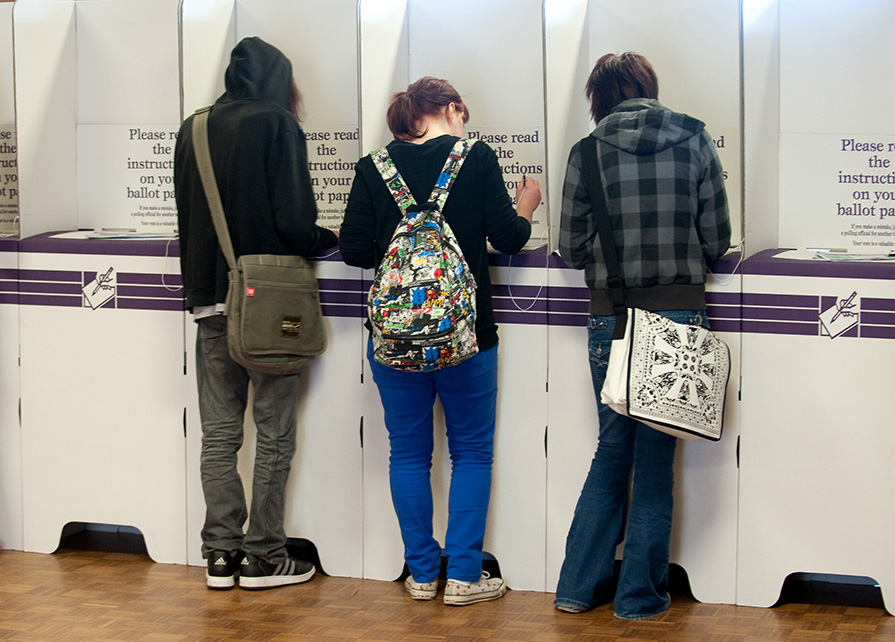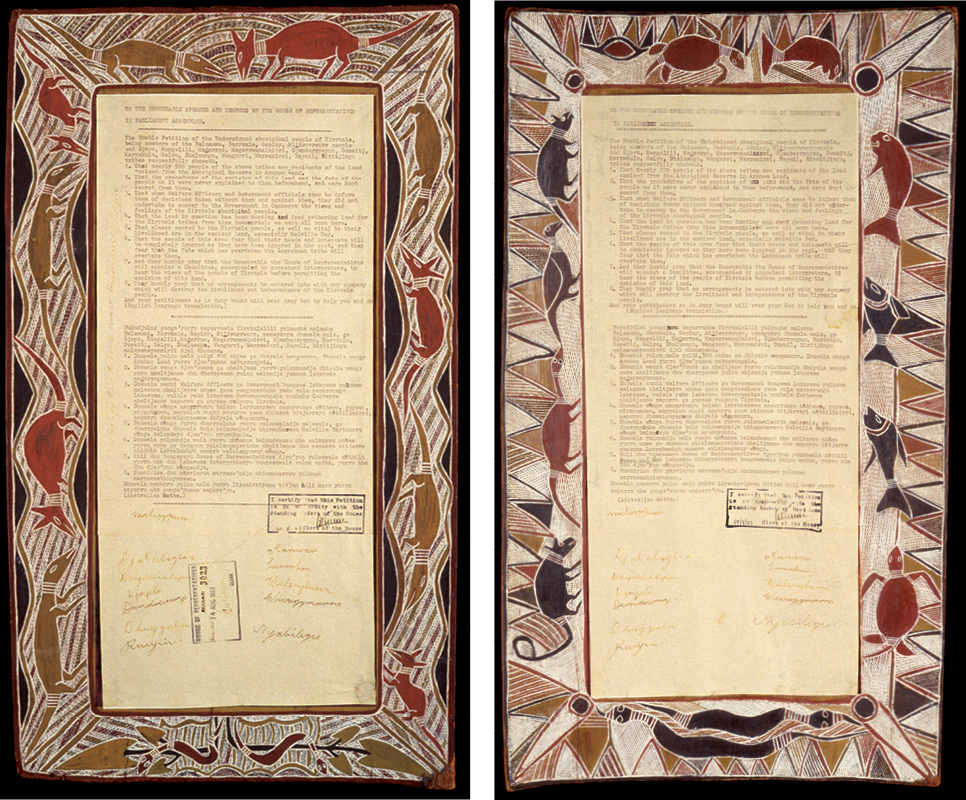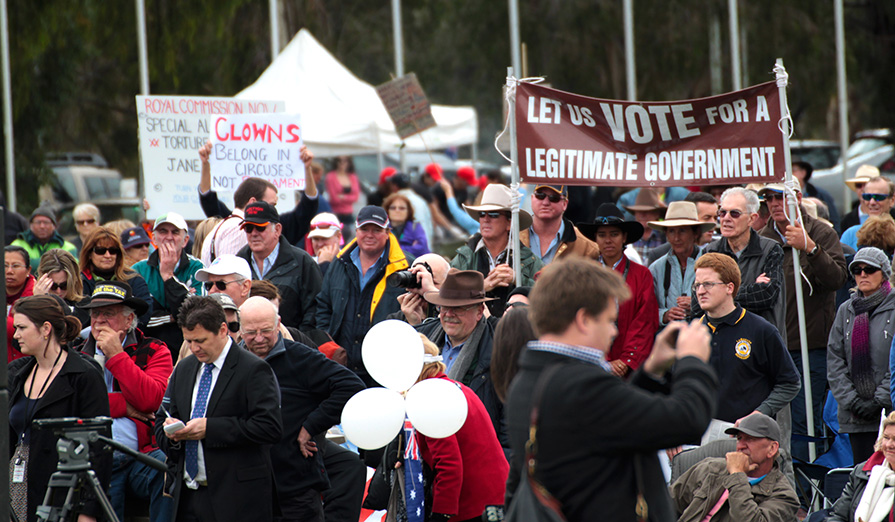Getting involved in Parliament
This fact sheet explores some of the ways that Australians can get involved in the Australian Parliament. It includes information on elections, contacting members of parliament, committees and protesting.
What will I learn?
- It is important be get involved because Parliament makes decisions on behalf of all Australians.
- There are many ways for people to get involved in Parliament like contacting their representatives, voting and protesting.
Curriculum alignment
Year 5 ACHASSK118
Year 8 ACHCK062
Why get involved in Parliament?
The Australian Parliament represents the people of Australia and makes laws and important decisions on behalf of all Australians. The more Parliament understands about the people’s opinions on issues, the more representative the Parliament’s decisions will be. It is important for Australians to engage with the Parliament to help it make decisions that reflect what the people want.
Getting informed about Parliament
Australians who want to have their say to Parliament can start by getting informed about the work of Parliament. The meetings of the Senate and House of Representatives are always open for the public to watch in-person or online, as is much of the work of committees. The press gallery reports on the work of Parliament through print, broadcast and social media. Many members of parliament also use social media to directly communicate to the public about their work.
Getting involved in Parliament
There are many ways individuals and organisations can have their say about the actions and decisions of Parliament:
Elections
People voting in a federal election

Australian Electoral Commission
Description
A row of 6 large, purple and white cardboard voting booths. There are 3 people standing facing into the booths, looking down and filling in their ballot papers. Each booth is screened off from the neighbouring booths so that people cannot see each others ballot paper.
Copyright information
Permission should be sought from the Australian Electoral Commission (AEC) for third-party or commercial uses of this image. To contact the AEC email: media@aec.gov.au or phone: 13 23 26.
People voting in a federal election

Australian Electoral Commission
Description
A row of 6 large, purple and white cardboard voting booths. There are 3 people standing facing into the booths, looking down and filling in their ballot papers. Each booth is screened off from the neighbouring booths so that people cannot see each others ballot paper.
Copyright information
Permission should be sought from the Australian Electoral Commission (AEC) for third-party or commercial uses of this image. To contact the AEC email: media@aec.gov.au or phone: 13 23 26.
At least every 3 years, Australians vote at a federal election to elect people to represent them in Parliament. Australians can enrol to vote at 16 and vote once they turn 18. Citizens over 18 can also nominate to be candidates and if they are elected, they become members of Parliament.
To make an informed decision when voting people can learn about their candidates, including their current representatives in Parliament. People can consider:
- policies and ideas of each candidate
- if candidates are members of political parties
- candidates’ past achievements.
If the people of Australia do not like the actions or policies of their current representatives, they have a chance to elect new ones.
Contact members of parliament
Australians can phone, write to or email members of parliament at any time about things that they think are important. People who have a view about a particular subject (such as health, education or the environment) can contact the government minister responsible for that area. Phone numbers, postal and email addresses of all members of parliament are available on the Parliament House website.
Petitions 
The Yirrkala petitions. Yirrkala artists, Dhuwa moiety, 14 August 1963 Yirrkala artists, Yirritja moiety, 28 August 1963
House of Representatives, Canberra
The Yirrkala petitions. Yirrkala artists, Dhuwa moiety, 14 August 1963 Yirrkala artists, Yirritja moiety, 28 August 1963

House of Representatives, Canberra
Description
These petitions were sent from Yirrkala, Northern Territory to the House of Representatives in 1963.The petitions are on 2 large rectangular pieces of bark. Each has a border decorated with traditional iconography of animals including turtles, snakes and fish. Inside each decorated border is a piece of paper with typed words, followed by handwritten signatures and stamps. The petitions have typed text in both Yolngu Matha and English.
Copyright information
Permission for publication should be sought from the House of Representatives Table Office at Table.Office.Reps@aph.gov.au

The Yirrkala petitions. Yirrkala artists, Dhuwa moiety, 14 August 1963 Yirrkala artists, Yirritja moiety, 28 August 1963
House of Representatives, Canberra
The Yirrkala petitions. Yirrkala artists, Dhuwa moiety, 14 August 1963 Yirrkala artists, Yirritja moiety, 28 August 1963

House of Representatives, Canberra
Description
These petitions were sent from Yirrkala, Northern Territory to the House of Representatives in 1963.The petitions are on 2 large rectangular pieces of bark. Each has a border decorated with traditional iconography of animals including turtles, snakes and fish. Inside each decorated border is a piece of paper with typed words, followed by handwritten signatures and stamps. The petitions have typed text in both Yolngu Matha and English.
Copyright information
Permission for publication should be sought from the House of Representatives Table Office at Table.Office.Reps@aph.gov.au
Members of the public can raise issues that are important to them and influence decisions made in Parliament by starting or signing a petition. A petition is a request by a group of citizens for Parliament to take action to solve a particular problem. A petition contains a list of signatures of people who support that request. It is then formally presented to Parliament and entered into the official records of Parliament.
Committees
Committees investigate issues and bills – proposals for new laws – in detail. They are usually made up of 6 to 10 members of parliament. Committees can invite members of the public, organisations and experts to share their experience and give their opinions about the issue or bill they are investigating. Sometimes people are then invited to speak at committee hearings to provide more information. Committees provide reports to Parliament which may recommend the government take some course of action based on the information they received during their inquiries.
Public meetings, protests and awareness campaigns
A protest at Australian Parliament House

Parliamentary Education Office (peo.gov.au)
Description
A large group of people are protesting outside Australian Parliament House. Some are holding signs, including one that says 'let us vote for a legitimate government'. There is a camera tripod in the foreground and some people are also using cameras.
Copyright information
This work is licensed under a Creative Commons Attribution-NonCommercial-NoDerivs 3.0 Unported License.
You are free to share – to copy, distribute and transmit the work.
Attribution – you must attribute the work in the manner specified by the author or licensor (but not in any way that suggests that they endorse you or your use of the work).
Non-commercial – you may not use this work for commercial purposes.
No derivative works – you may not alter, transform, or build upon this work.
Waiver – any of the above conditions can be waived if you get permission from the copyright holder.
A protest at Australian Parliament House

Parliamentary Education Office (peo.gov.au)
Description
A large group of people are protesting outside Australian Parliament House. Some are holding signs, including one that says 'let us vote for a legitimate government'. There is a camera tripod in the foreground and some people are also using cameras.
Copyright information
This work is licensed under a Creative Commons Attribution-NonCommercial-NoDerivs 3.0 Unported License.
You are free to share – to copy, distribute and transmit the work.
Attribution – you must attribute the work in the manner specified by the author or licensor (but not in any way that suggests that they endorse you or your use of the work).
Non-commercial – you may not use this work for commercial purposes.
No derivative works – you may not alter, transform, or build upon this work.
Waiver – any of the above conditions can be waived if you get permission from the copyright holder.
Australians can organise public meetings or protests to share their views. Members of Parliament may be invited to attend public meetings or protests to hear what people have to say and answer questions. Media coverage of these meetings and protests can put pressure on the Parliament to act to address the issue.
People can also start or get involved in public awareness campaigns by participating in online forums and discussions, using social media, writing a letter to the newspaper or calling talk-back radio.
